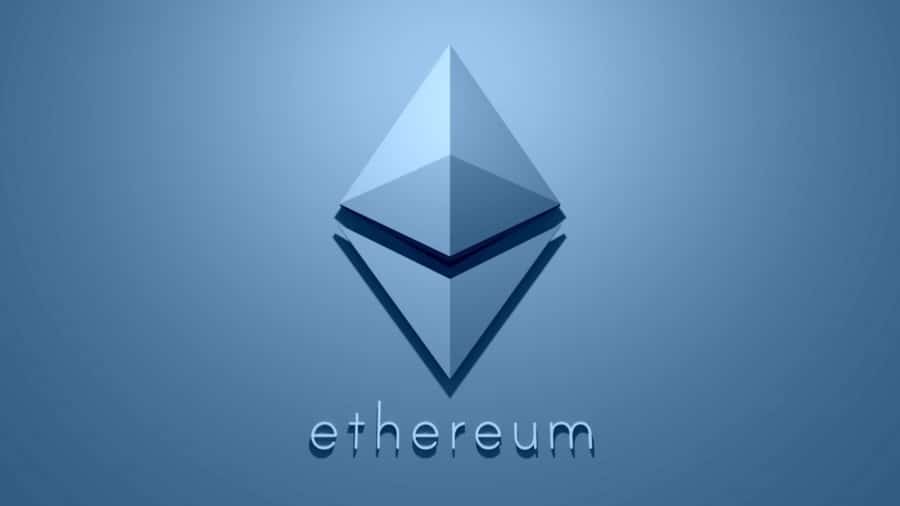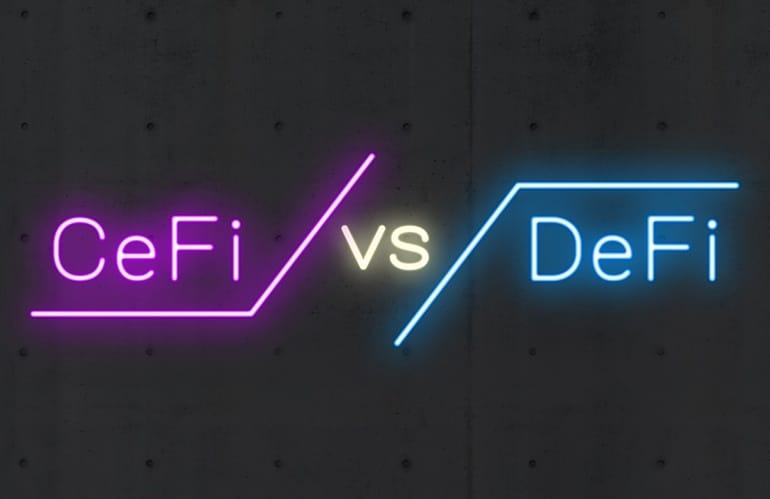Mining Ethereum: What is it?
Solving challenging mathematical puzzles is an essential part of mining a cryptocurrency. In many cryptocurrency networks, miners provide a “proof-of-work” that validates transactions either by investing their time and computing power to solve such mathematical puzzles. Ethereum, for example, uses proof-of-work (PoW) consensus, like Bitcoin, but is switching to proof-of-stake (PoS) soon.
Miners are also responsible for producing ether tokens using this method since they get paid in ether for completing PoW tasks. Finally, as a means of creating “encrypted” data, PoW relies on the hash function, which can be generated procedurally based on any input. A critical difference between hashing and traditional encryption is that it is a one-way process instead of a two-way process.
To determine which input was used to achieve a specific hash, all feasible input combinations must be hashed and choose which fits. This is further complicated because even a slight change to the initial data can result in radically different outcomes.
The “difficulty” option is used to select desirable hashes for proof-of-work. The previous block’s hash must also be considered when generating a hash to satisfy difficulty requirements. It is possible to control the amount of energy needed for this activity by varying the difficulty level.
In this article, we will guide you through the process of mining Ethereum. What is the mining process for Ethereum transactions? =
Ethereum mining: what is it?
Investing in mining is primarily motivated by the desire to make money since it transforms network security into a challenging but generally profitable endeavor. Aside from receiving a set amount for each block, the miners also receive any transaction fees collected from users. Even though costs make up a relatively small portion of total revenue, Ethereum’s decentralized financial boom in 2020 has contributed to the transformation of the revenue picture.
In addition to mining Ethereum for its value, there are other reasons for doing so. An individual who is selfless enough to mine at a loss for the sole purpose of contributing to network security could choose to mine at a loss for that reason alone. The mining process can be a helpful method of gaining Ether without purchasing the asset directly.
Home mining is a novel method of less expensive heating. Those who live in colder regions may find the heat produced by valuable mining equipment even if the cryptocurrency is worth less than energy. Bitcoin and heat are produced by mining equipment.
What will happen to Ether mining once proof-of-stake is implemented?
Any potential Ethereum miner who reads the Ethereum 2.0 roadmap is terrified about the move to proof-of-stake. This consensus method deprecates miners and gives them a specific period to recoup their investment. However, the PoW mining method will likely work until about 2023.
Ethereum 2.0 Phase 0, scheduled to launch in 2020, will be a separate blockchain unrelated to mining. The mining industry may lose value only in Phase 2; as of October 2020, that change is not definite.
There is an expectation that Phase 2 of the project will begin at the end of 2021 or the beginning of 2022. However, there has been a long history of Ethereum roadmap delays; in 2017-2018, it was generally agreed that the conversion would be complete by 2020.
A large portion of new miners’ hardware investments should be recouped by October 2020, according to most predictions. Of course, nobody knows when Ethereum 2.0 will be complete, but most estimates indicate it will be completed sometime in 2020.
How profitable is Ethereum mining?
Any form of mining is economically viable depending on the power costs in a particular area. For mining to be feasible, prices closer to $0.06 per kilowatt-hour are recommended, rather than less than $0.12.
Most home mining operations would not be profitable with such numbers, especially in industrialized nations where the cost of electricity is often over $0.20 a kilowatt-hour. Nevertheless, it is possible to profit with such pricing, although the capital return may be negatively affected. For example, a $3,000 miner that earns $200 per month as income and consumes $45 of power at the cost of $0.05 per kWh will pay for itself in 19 months. On the other hand, an area where power costs $0.20/KWh would pay off the same miner in 150 months, or more than 12 years.
The relocation of professional miners’ operations to areas with the lowest power costs or utilization of the reduced rate set aside for industry can give them a competitive advantage. There are several reasons why mining has become such an essential and expensive industry.
Nevertheless, AMD and NVIDIA’s consumer graphics cards make it possible for most people to mine Ethereum at home. Ethereum miners living in areas with inexpensive electricity may be able to make significant money from this.
Several ETH mining calculators are available that can provide an estimate of what returns may be expected, including Miningbenchmark.net, Whattomine, and CryptoCompare’s calculator. It is also possible to determine these values independently. There is a pretty straightforward formula that calculator websites use:
This example gives a miner’s daily earnings as a ballpark figure. It is equal to the total issuance times the miner’s share of the network’s hash rate determines a miner’s income. To earn a profit, one needs to deduct the power cost used by the miner (e.g., the cost of mining Ethereum). In this example, a gadget that consumes 1.5 kWh of power costing $0.10 per unit per day would cost $3.6 per day.
The revenue calculation values can also be obtained online. In addition to updating the hash rate, Etherscan will also update block timings and block rewards.
Ethereum’s network has 5,760 blocks per day as of October 2020, and block timings remain at 15 seconds, with a reward of 2 ETH per block. Network hash rates are the sum of the hash rates of each miner on the network, while miner hash rates are determined by the mining equipment used.
To be profitable in mining, increasing the hash rate while reducing power and hardware costs is essential. Consequently, mining gear selection is as important as location when it comes to mining.
How are transactions on Ethereum mined?
Ethereum was initially intended as a cryptocurrency that could only be mined by personal computers using GPUs. ASICs, or application-specific integrated circuit computers, are the only hardware that can mine Bitcoin. Since these devices are hardwired to do just one thing, they are more efficient than general computing hardware.
It is very challenging to develop and implement a mining algorithm that is ASIC-resistant theoretically and practically. Nevertheless, it was finally possible to buy ASICs designed to mine Ethereum’s Ethash algorithm in 2018. A GPU miner has a slight advantage over these miners regarding hashing efficiency.
Field-programmable gate arrays, or FPGAs, are another type of specialized device. Despite some reconfigurability, these are still more efficient than GPUs for specific calculations. Between ASICs and GPUs, they represent a middle ground.
It is possible to mine Ethereum with all of these tools, but not all of them are useful or rational. FPGAs, for example, typically perform worse than GPUs. These systems are complex, expensive, and require a high degree of technical expertise to operate. So despite their extremely competitive mining performance with top GPUs, the benefit may not be worth it.
The performance of ether ASICs is superior to that of graphics cards, but several disadvantages remain in real-world applications. For example, it is possible to use GPUs for coin mining operations in a pinch or to sell them to gamers. Furthermore, ASICs are harder to obtain since few stores carry them, and buying directly from manufacturers could take a long time.
GPUs remain the most practical option for hobbyist home miners due to their adaptability and reasonable price-performance ratio.
Where can I find the best mining equipment?
In choosing hardware, the following three criteria should be considered: the maximum hash rate, the energy use, and the cost.
Often overlooked, the purchase price can determine the success or failure of a mining business because equipment wears out over time. In order for devices to last as long as possible, component deterioration must be considered. For example, it is frequently overstated that GPUs continue to mine for more than five years due to their high level of resilience.
Miners are most at risk from hardware obsolescence. Existing miners can be virtually eliminated by GPUs and ASICs, especially those with high energy costs. Due to this, the “payback period” in mining becomes a crucial indicator of financial analysis because it indicates how long it will take for the miner to recoup its investment.
The mining of Ethereum efficiently requires various hardware components on GPUs and FPGAs. Asrock X370 Pro BTC+ and Gigabyte GA-B250-FinTech are two motherboards that are optimized for mining. Generally, regular motherboards cannot support more than 14 GPUs on each board.
It is recommended that the motherboard has at least 256GB of disc storage, 8 or 16 gigabytes of RAM, and 8 or 16 gigabytes of RAM. To mine Ethereum efficiently, you will require at least four gigabytes of GPU runtime memory.
Because GPU mining is irrelevant, it may be as inexpensive as necessary for the central processing unit. Multi-GPU installations may require a GPU adaptor, also called a ridge, to connect the GPUs to the motherboard. It is vital that the mining rig casing is wide enough and open enough to allow airflow.
Linux could require more command-line interaction to set up than Windows, but both are respectable operating systems. To achieve the earlier-mentioned numbers, GPUs’ clock speeds, power consumption, and memory timings must be optimized, although a detailed explanation is beyond the scope of this article.
Mining Ethereum with an Ethereum mining pool is the fastest and easiest way to earn ETH, such as SparkPool, Nanopool, F2Pool, and many others. Instead of discovering a whole block every now and then, miners can earn a steady income from these types of payments. Many mining software options are available, such as Ethminer, Claymore, and Phoenix. For your particular arrangement, you might want to test them all for your specific arrangement to find out which is the fastest.
Keeping the hardware in excellent condition requires regular maintenance, cleaning, and dusting. There are a number of other components needed to run a successful mining farm, many of which are closely guarded trade secrets. Even though this article isn’t exhaustive, it should give you a solid know-how base to conduct further research if you’re serious about mining.
***





